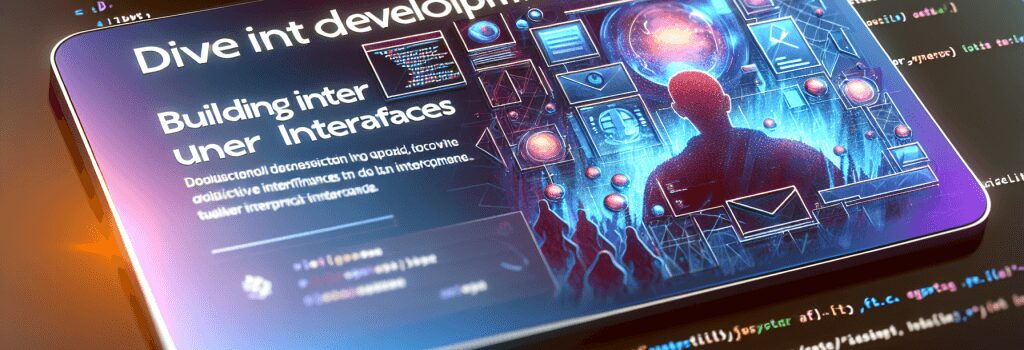Dive into Development: Building Interactive User Interfaces

Introduction to Interactive User Interfaces
When it comes to web development, making websites both functional and attractive is a top priority. A crucial part of this process lies in building interactive user interfaces (UIs) that provide an extraordinary user experience.
The Importance of Building Interactive UIs
In today’s digital era, a seamless, intuitive, and attractive interface is no longer a nice-to-have but a necessity. The user interface is essentially the bridge between the user and the system, and it helps users interact with a website effectively. Developing interactive UIs is, therefore, an essential skill every aspiring web developer must master.
The Role of HTML, CSS, PHP, JS, and WordPress in UI Development
The technologies HTML, CSS, PHP, JS, and WordPress provide the primary foundation for creating interactive user interfaces. HTML lays the groundwork, CSS enhances aesthetic appeal, JS adds interactive elements, PHP enables server-side scripting, and WordPress simplifies the whole process of web development.
A Step-By-Step Guide to Building Interactive UIs
Step 1: Master HTML and CSS
HTML (HyperText Markup Language) and CSS (Cascading Style Sheets) are the fundamental building blocks of web development. HTML is used for creating the structure of web pages, while CSS is employed to style the HTML elements. Mastering these two technologies is the first step towards building an engaging user interface.
Step 2: Leveraging JavaScript for Interactivity
While HTML and CSS are responsible for the functionality and design of a website, JavaScript (JS) is what brings a webpage to life. JS adds dynamics and interactivity to a website, making it more engaging for users. From simple animations to complex functionalities, JS is the key to creating interactive elements in a UI.
Step3: Integrating PHP for Backend Operations
PHP, a popular server-side scripting language, is used for developing the backend of a website. It handles all the server-related tasks and database interactions. With PHP, you can build dynamic and interactive websites that can robustly handle user input and data processing.
Step 4: Utilize WordPress to Create Efficient Websites
WordPress simplifies the process of web development to a great extent. It allows you to create professional-looking, interactive, and fully functional websites without having to code everything from scratch. With numerous themes and plugins, WordPress adds another level of efficiency in the development process and the resulting UIs.
Conclusion
Web development is an exciting journey that requires constant learning and experimenting. By mastering HTML, CSS, JS, PHP and WordPress, you’re definitely taking a significant step towards building effective, engaging and interactive user interfaces. Remember, every bit of improvement in your UI can significantly contribute to an enhanced user experience, website performance, and ultimately, a greater success in your web development career.


